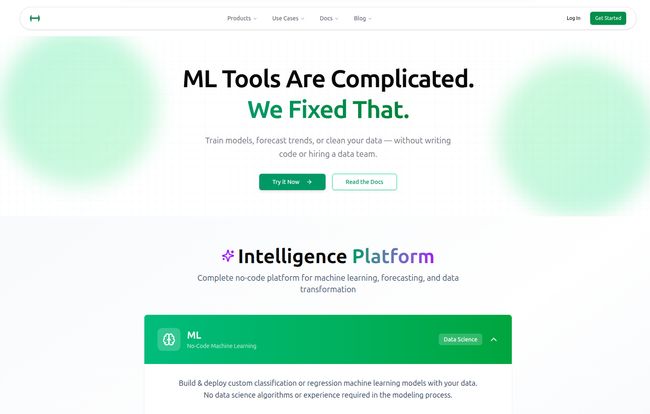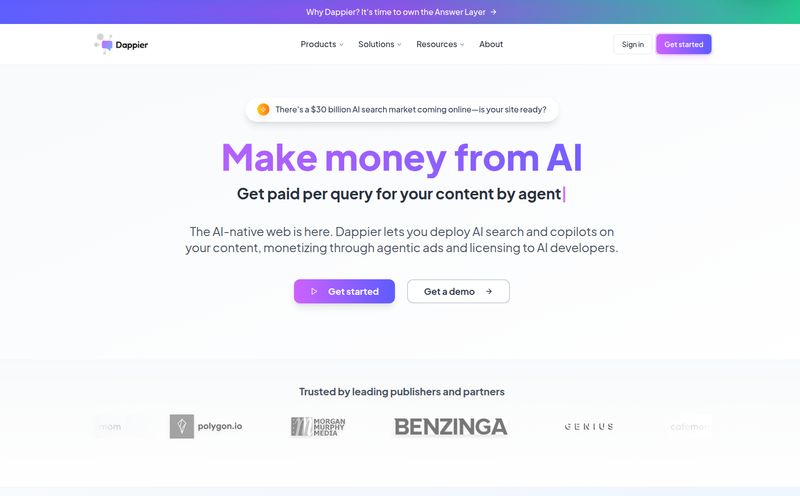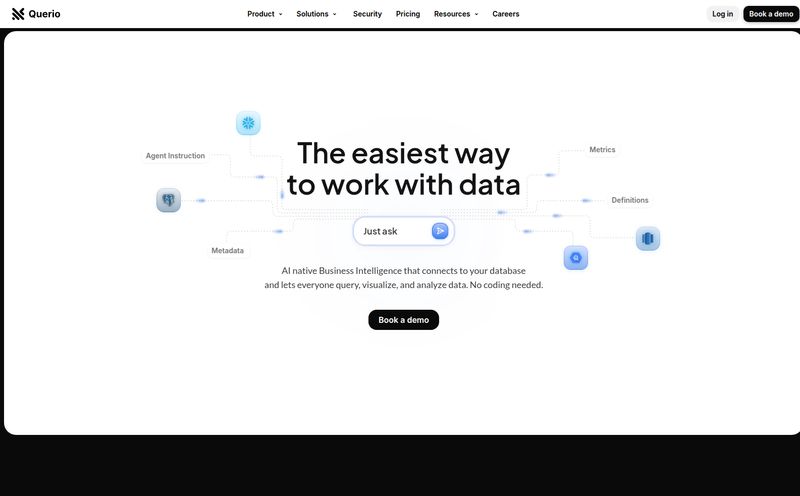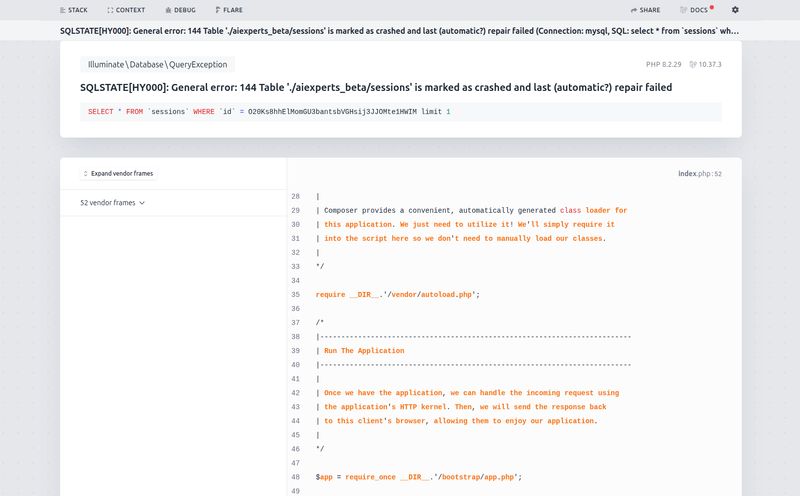I’ve spent more years than I care to admit in the trenches of digital marketing and SEO. And I swear, if I have to sit through one more meeting where a C-level exec says “we need to leverage our data with AI,” I might just flip the table. It’s not that they’re wrong. They’re absolutely right. The problem is the chasm between that statement and the reality of making it happen.
Traditionally, 'leveraging AI' meant hiring a team of expensive data scientists, spending months building data pipelines, cleaning datasets that look like a toddler’s finger painting, and then, maybe, if the stars align, you get a predictive model that’s obsolete by the next quarter. It’s a slog. A costly, time-consuming slog.
So when a tool like Heimdall lands on my desk, my professional curiosity gets the better of my cynicism. Their homepage hits you with a bold statement: “ML Tools Are Complicated. We Fixed That.”
Okay, Heimdall. You have my attention. Let's see if you've really fixed it.
So What is Heimdall, Exactly? And Why Should You Care?
At its heart, Heimdall is an automatic, no-code machine learning platform. Think of it like Squarespace or Webflow, but for building data models instead of websites. The entire mission, as they state it, is to “democratize access to machine learning by building accessible cloud-based services.” I’ve heard that promise before, but Heimdall seems to be putting its code where its mouth is.
This isn't for the hardcore data scientist who dreams in Python and lives in a Jupyter Notebook. This is for the rest of us. The marketers, the operations managers, the startup founders who have tons of data but not the PhD-level team to make sense of it. It’s about getting answers from your data without needing to learn a new programming language first.
It’s a platform designed to take your raw business data—from various sources—and help you build and deploy custom machine learning models with, and this is the kicker, minimal-to-no coding knowledge.
Cracking Open the Toolbox: A Look at Heimdall's Features
So what’s actually inside this thing? Heimdall splits its offering into a few core components, which they call the 'Intelligence Platform'. Let’s break 'em down.
The Intelligence Platform: Your No-Code Model Builder
This is the main event. This is where you can build and deploy custom classification or regression models. In plain English, that means you can do things like:
- Predict which customers are most likely to churn.
- Classify incoming customer support tickets by urgency.
- Forecast sales for the next quarter.
- Identify high-potential leads from a giant list.
They talk about “explainable models” and “one-click deployment,” which are music to my ears. One of the biggest hurdles with ML is the 'black box' problem—not knowing why the model made a certain prediction. Explainable AI (XAI) is a huge step forward. And one-click deployment? If it works as advertised, that alone could save teams weeks of headaches.
The Magic of 'The Forge' and its NLP Suite
Here’s where I get really interested. 'The Forge' is what they call their data processing pipeline, and it includes an NLP suite. NLP, or Natural Language Processing, is the science of teaching computers to understand human language. And it's a game-changer.
Think about all the valuable data your company has that isn’t in neat rows and columns. Customer reviews, support emails, survey responses, social media comments... it's a goldmine of unstructured text. Heimdall’s NLP suite claims to convert all that messy text into structured, tabular data. This is massive. It means you can finally analyze what people are saying at scale, not just what they’re clicking.

Visit Heimdall
Connecting All Your Data Silos
A model is only as good as the data it’s fed. And our data is everywhere. Heimdall seems to get this, offering direct integrations with some of the most common databases out there: PostgreSQL, MySQL, MariaDB, and Amazon Redshift.
This is a big quality-of-life improvement. It means you can connect your production database directly to the platform, cutting out the ridiculously tedious step of constantly exporting and importing CSV files. It’s a more direct, secure, and up-to-date way to work with your information.
That 2592x Faster Claim: Is It Too Good to Be True?
Alright, let’s address the headline claim on their site. They have a little calculator that compares doing a task with and without Heimdall. The result? 1.3 months traditionally vs. 1 minute with Heimdall.
That’s a speed increase of 2,592 times. My first reaction? C’mon.
But let's be fair. They’re likely comparing a very specific, ideal use-case on their slick, automated platform against the entire traditional, manual workflow. That includes project scoping, data gathering, manual cleaning, coding a model from scratch, testing, and deployment. So, is it a bit of marketing flair? Of course. But it perfectly illustrates their value proposition: radical speed.
Even if it's only 100x faster in a real-world, messy scenario, that’s still a revolutionary leap for most businesses. It changes the entire ROI calculation.
Here's a simplified look at what they're comparing:
| Task | Traditional Approach (The 1.3 Month Ordeal) | The Heimdall Approach (The 1 Minute Dream) |
|---|---|---|
| Data Connection | Manual exports, writing scripts, API wrangling. | Point-and-click integration. |
| Model Building | Weeks of coding, testing, and debugging. | Select data, choose target, click 'build'. |
| Deployment | Complex server setup, maintenance, scaling issues. | "One-click deployment." |
The Big Questions: The Catch and The Cost
This all sounds great, but I've been in this game too long to not look for the catch. The provided info and a quick tour of their site brings up a couple of things.
First, the potential for a learning curve. Any powerful tool requires some getting used to, and I suspect that to really master Heimdall, you'll need to spend some real time with it. It's 'no-code', not 'no-thought'.
Second, and this is my biggest pet peeve with B2B SaaS companies: the pricing is completely hidden. There's no pricing page. Just a “Try for free” or “Schedule a Demo” button. This enterprise sales model means you can’t quickly assess if it’s a fit for your budget. You have to get on a call, go through the whole song and dance, and then get a custom quote. I get why they do it, but as a user, it’s frustrating. I'd speculate they operate on a tiered model based on data volume, number of models, or users, but that's just a guess.
My Final Take: Is Heimdall Worth a Look?
So, after all that, what’s the verdict? Despite my initial cynicism and the irritation over the lack of transparent pricing, I’m genuinely optimistic about what Heimdall represents.
This is the direction things are heading. The democratization of powerful tech. Heimdall isn’t just a tool; it's a bridge. In Norse mythology, Heimdall guards the Bifrost, the shining bridge that connects the world of mortals to the world of the gods. It feels like an apt metaphor. This platform is trying to be the bridge that connects the everyday business user to the once god-like power of machine learning.
It’s not a magic wand that solves every data problem. But for a business that’s rich in data and poor in data scientists, it could be a transformative investment. It lowers the barrier to entry so dramatically that it allows you to start asking questions of your data that were previously impossible to answer.
If you’re in that boat, I’d say Heimdall is absolutely worth scheduling that demo for. Just be prepared to negotiate.
Frequently Asked Questions
- 1. What is Heimdall in simple terms?
- Heimdall is a software platform that lets you build and use artificial intelligence models to analyze your business data, without needing to be a programmer or a data scientist.
- 2. Do I need to know how to code to use Heimdall?
- No. The platform is designed as a “no-code” solution, meaning you interact with it through a graphical user interface with buttons and menus, not by writing code.
- 3. What kind of data can I connect to Heimdall?
- Heimdall supports direct integration with popular databases like PostgreSQL, MySQL, MariaDB, and Amazon Redshift. It also has an NLP suite to process text data from sources like reviews or emails.
- 4. How much does Heimdall cost?
- Unfortunately, Heimdall does not list its pricing publicly. You need to contact their sales team or schedule a demo to get a custom quote based on your company's needs.
- 5. Is Heimdall better than building my own ML models from scratch?
- It depends. For speed, accessibility, and for businesses without a dedicated data science team, Heimdall is likely a much better option. For highly specialized, unique problems where you need absolute granular control, a custom-coded solution might still be preferred by expert teams.
- 6. What does the “NLP suite” do?
- The Natural Language Processing (NLP) suite takes unstructured text data (like customer feedback, emails, or social media comments) and turns it into a structured format (like a spreadsheet). This makes it possible to analyze language-based data at a large scale.



